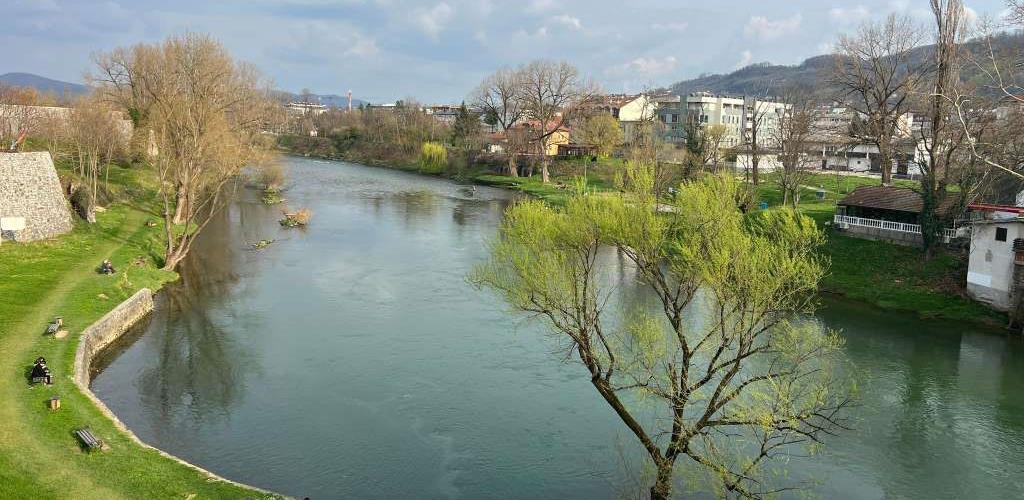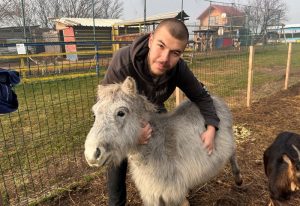The constant growth in the number of visitors confirms that Banja Luka is becoming an increasingly interesting tourist destination in Bosnia and Herzegovina. According to statistical data, 116,244 tourist arrivals were recorded in Banja Luka in 2023, or 23 percent more than the year before.
It is also noticeable that tourists are staying longer in Banja Luka, and the reason for this is surely the increasingly rich and attractive offer of the city on Vrbas. There are many reasons to visit the second largest city in Bosnia and Herzegovina, which is also the administrative, cultural and economic center of Republika Srpska.

Kastel fortress
The main attraction is certainly the Vrbas River, along which there are numerous promenades and bathing areas. Only a few kilometers from the city center is the Vrućica beach, which is a favorite destination of a large number of Banja Luka residents and tourists in spring and summer due to a series of thermal mineral springs. There are several spas in that location, including “Direklija” and “Kraljičina iliđa”, which got its name from the legend that queens used to bathe there. These spas have the status of a national cultural monument of Bosnia and Herzegovina.
Vrbas in Banja Luka is also specific for a special type of boat – dayak, which allows tourists to see the city and its shores while sailing on the river. By the way, one of the most beautiful views of Vrbas is from the medieval Kastel fortress, a preserved building that bears witness to the turbulent history of this city that often changed rulers. Apart from being one of the dominant buildings in Banja Luka, Kastel is the venue for numerous festivals and concerts in the spring and summer months.

Gospodska street
Numerous legends have been told about Banja Luka and its inhabitants, and there will never be complete agreement about how many of them are true stories. Perhaps the most famous is the one about Safikada, an unlucky girl in love with a soldier. The people of Banja Luka will often say that Verona has Romeo and Juliet, and Banja Luka has Safikada. There are several versions of this story about forbidden love, and according to one, it took place in the 17th century, and according to another, in the 19th century. In both versions, the girl sacrificed her life after the soldier she was in love with died at the front. Safikada’s grave is located in the immediate vicinity of the Kastel and a plaque with this love story is erected above it. For years, this place has been a temple of love, where lovers come to swear eternal love, and there is also a custom for girls in love to light candles on Safikada’s grave, praying for luck in love. A must-see location for tourists during their stay in Banja Luka.
Due to the devastating earthquake of 1969, there are not many old buildings left in Banja Luka, but still in the very center of the city, near Trg Krajina, there are several preserved and restored buildings that preserve the spirit of the former times. One of them is the “Palas” Hotel from 1933, which today is owned by the “Zepter international” group. Although part of the famous hotel is in operation and is considered one of the most luxurious places for guests to stay, the other part of the building was demolished and in its place Zepter is building the largest and most luxurious hotel and business complex in the RS. When the construction is completed, this building with a height of over 100 meters will dominate the panorama of Banja Luka, but will also offer new facilities to tourists.

Ferhadija Mosque
Banja Luka is also known for its religious buildings. Although this city was not involved in war conflicts, all the city’s mosques were mined and destroyed in 1993, and in the post-war period, their reconstruction was initiated. Thus, in the immediate vicinity of Kastel, the Ferhadija mosque was restored, in the complex of which is the famous Ferhat Pasha fountain. This mosque is considered one of the masterpieces of Islamic architecture in Bosnia and Herzegovina, and it is rivaled by the recently renovated Arnaudi mosque, whose grand opening is scheduled for the beginning of next month.
Today, one of the main city squares is dominated by the Cathedral of Christ the Saviour, which was built by the Serbian Orthodox Church on the site of the former Church of the Holy Trinity. This imposing building is located in the immediate vicinity of several other beautiful architectural buildings, such as the Bansko dvor, which is the venue for numerous cultural and social events, as well as the City Administration building and the Palace of the Republic, the former building of the Mortgage Bank.

Cathedral of Christ the Savior
What Banja Luka has been known for for centuries is Trappist cheese. For the story of this delicacy, it is necessary to go a few kilometers outside the city center, to the Trappist monastery, that is, the abbey “Maria Zvijezde” in Delibašin Selo near Vrbas. The monastery was founded by a group of seven monks from the German Mariawald Abbey in 1869, but today only two monks preserve the religious tradition of their order, as well as the recipe for the original fortified cheese. Namely, the recipe is a well-kept secret. There is no written recipe, and it is passed down from monk to monk. So it is hard to believe that some of the tourists will miss the opportunity and leave Banja Luka without the famous “trappist”.

Trappist monastery
Source: akta.ba





